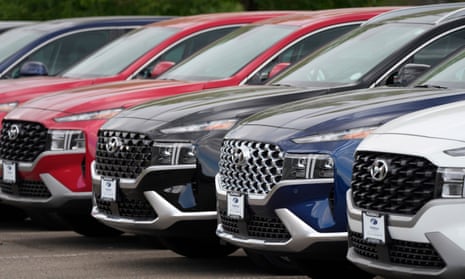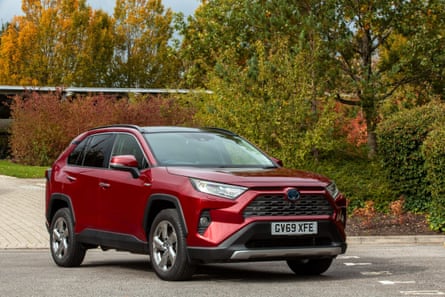
Lab tests v the real world: how does the fuel consumption of Australian SUVs compare?
The Australian Automotive Association has found some SUVs use up to 13% more fuel on the road than reported in laboratory tests. Is your vehicle underperforming?
A real-world testing program at the Australian Automobile Association has shown that some SUVs have much better fuel consumption than others.
The program, which compares the fuel consumption and emissions of vehicles in Australian driving conditions with each vehicle’s laboratory test result, showed some SUVs used up to 13% more fuel on the road than reported in laboratory tests.
Results showed the fuel consumption of five of the nine vehicles tested ranged from 8% to 13% higher than their laboratory tests.
It comes after a report by the Global Fuel Economy Initiative found that motor emissions could have fallen by more than 30% without the SUV trend which now means they have a 51% share of the world market.
The AAA focused on small and medium SUVs in its first test, with the Hyundai Kona and the Toyota Rav4 showing the largest discrepancy in results – both models consuming 13% more fuel than lab tests showed.
Here is your guide to which car performed best:
Ford Puma 2022
The 2022 Ford Puma used 8% more fuel, and emitted 10% more CO2, than mandated lab tests. The 1L three-cylinder SUV recorded 5.3L per 100km in lab tests, but returned 5.7L per 100km in the real-world testing program.
Its lab results showed it emitted 121g of CO2/km, but in the AAA test, it emitted 134g/km.
GWM Haval Jolion 2023
The 2023 GWM Haval Jolion recorded more positive results compared with most of the tested SUVs: it used 2% less fuel, and emitted 2% less CO2, than the mandated lab tests.
The 1.5L four-cylinder SUV had recorded 8.1L per 100km in lab tests, and returned 7.9L per 100km in the real-world testing program.
Its lab results also showed it emitted 186g of CO2/km, but in the AAA test, it emitted 183g/km.
Hyundai Kona 2022
The 2022 Hyundai Kona posted some of the highest discrepancies in the test. The 2L four-cylinder SUV used 13% more fuel and emitted 9% more CO2 than mandated lab tests.
It recorded 6.2L per 100km in lab tests and returned 7.0L per 100km in the real-world testing program.
Its lab results also showed it emitted 148g of CO2/Km, but in the AAA test, it emitted 161g/Km.
Hyundai Tucson 2022
Unlike the Kona, the Tucson actually posted a positive result, with the real-world test results coming very close to lab results. The SUV used 1% less fuel, but emitted 1% more CO2 than mandated lab tests.
The 2L four-cylinder SUV recorded 6.3L per 100km in lab tests and returned 6.2L per 100km under real-world tests.
Its lab results also showed it emitted 163g of CO2/km, only a slight discrepency compared to the AAA test where it emitted 164g/km.
after newsletter promotion
MG ZS 2023
The 2023 MG ZS used 8% more fuel and emitted 5% more CO2 than mandated lab tests. The 1.5L four-cylinder SUV recorded 7.1L per 100km in lab tests, but returned 7.7L per 100km under real-world tests.
Its lab results also showed it emitted 165g of CO2/km, but in the AAA test, it emitted 174g/km.
Mitsubishi ASX 2021
In very similar results to the MG, the 2021 Mitsubishi ASX also used 8% more fuel and emitted 6% more CO2 than mandated lab tests.
The 2L four-cylinder SUV had recorded 7.6L per 100km in lab tests, but returned 8.2L per 100km under real-world tests.
Its lab results also showed it emitted 176g of CO2/km, but in the AAA test, it emitted 186g/km.
Nissan X-Trail 2023
In a more positive result, the 2023 Nissan X-Trail returned results that showed it used 2% less fuel and emitted 4% less CO2 compared to mandated lab tests.
The 2.5L four-cylinder SUV had recorded 7.4L per 100km in lab tests and returned 7.3L per 100km in the real-world testing program.
Its lab results also showed it emitted 174g of CO2/km, but in the AAA test, it emitted 168g/km.
Toyota Rav4 Hybrid 2022

The Rav4 was the only hybrid on the list to post results that were very close to its mandated lab test results, using only 2% more fuel and emitting 3% more CO2 in the real-world test.
The 2.5L four-cylinder SUV had recorded 4.7L per 100km in lab tests, but returned 4.8L per 100km under real-world tests.
Its lab results also showed it emitted 107g of CO2/km, compared against its AAA test emissions of 111g/km.
Toyota Rav4 2022
Unlike its hybrid sibling, the Rav4 returned a greater discrepancy between real-world and mandated lab test results. The 2L four-cylinder SUV used 13% more fuel and emitted 13% more CO2 than it showed in the lab.
The SUV had recorded 6.0L per 100km in lab tests, but returned 6.8L per 100km in the real-world testing program.
Its lab results also showed it emitted 137g of CO2/km, but in the AAA test, it emitted 155g/km.